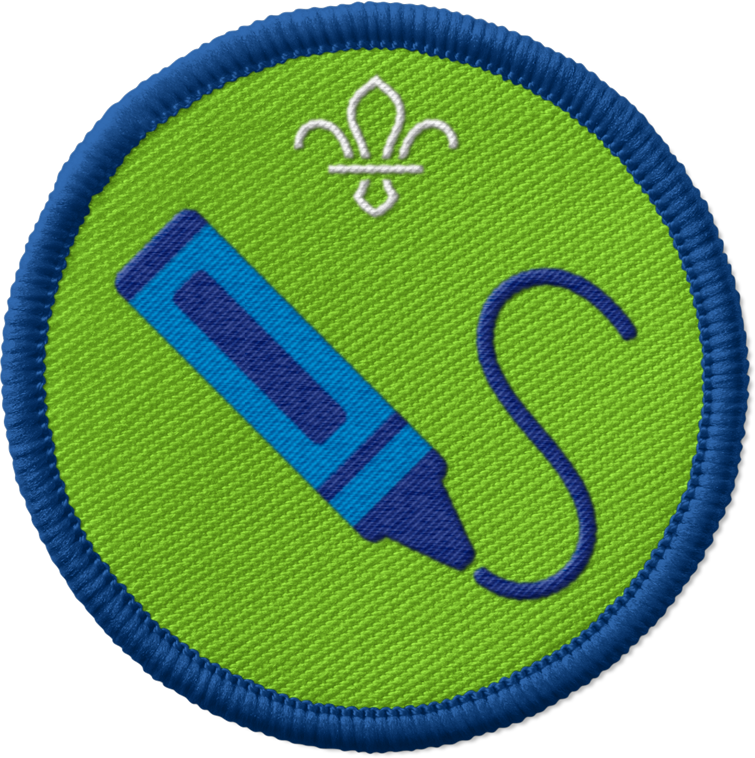
Make a bear paw stamp
You’ll need
- Brown paint
- Paintbrushes
- Large pom poms (1 per person)
- Small pom poms (1 per person)
- Wooden pegs
- White paper
- Pots for paint
- Pencils
Before you begin
- Use the safety checklist to help you plan and risk assess your activity. Additional help to carry out your risk assessment, including examples can be found here. Don’t forget to make sure all young people and adults involved in the activity know how to take part safely.
- Make sure you’ll have enough adult helpers. You may need some parents and carers to help if you’re short on helpers.
- Remind everyone not to put the paint-covered fingers, pom poms and paintbrushes in their mouths.
- There are lots of books about bears that you could read before doing this activity. Some suggestions include ‘Where's My Teddy?’ by Jez Alborough, ‘Can’t You Sleep Little Bear?' by Martin Waddell, and ‘We’re Going on a Bear Hunt’ by Michael Rosen.
- We recommend reading the story for your session after the activity to allow the paint time to dry before they take it home.
Make the stamps
- Gather everyone together and explain that you’re going to be making bear paw print stamps.Tell everyone that they’re going to use two different sized sponges to make some bear paw print artwork
- Talk about how many footprints they might put on their paper. They need to think how their bear is moving. How many feet does their bear walk on - is it two or four? Do bears jump? Do they do big steps or little steps? Would it be walking slowly and looking around, or is there bear running? Do bears have claws?
- Ask everyone to write their name in corner of paper. If some people might not yet be able to write their name, get them to make a specific mark on the paper instead so they remember which is theirs. You could also use different stickers to tell people’s work apart or write people’s names on in pencil for them to trace in felt tip.
- Give each person a large pom pom and a wooden peg. This stamp is going to be the main part of the paw print or the bear’s pad.
- Ask everyone to attach the peg to the pom pom. They should then hold the peg and dip the pom pom lightly or gently into the brown paint.
- When the pom pom has paint on it, they should then place the pom pom gently onto the paper to make a print and start making a trail. They could do a few stamps. However, they’ll need to re-dip their pom pom in paint every few stamps.
- Give each person a small pom pom and a wooden peg. This stamp is going to be the bear’s toes.
- Ask everyone to attach the peg to the pom pom. They should then hold the peg and dip the pom pom lightly or gently into the brown paint.
- Gently stamp the small pom pom three times around the bigger prints to make toes on each of the paw prints.
- Ask questions to everyone to encourage them to talk to friends about what they imagined their bear was doing while making the paw prints on their paper.
- If you’ve time, why not get the Squirrels to decorate their artwork further? They could draw, paint or use craft materials to create grass, bugs, trees to make their scene come to life!
- The pom poms can be washed and reused. You could even stick them to the artwork! Why not make a display of the bear’s long trail by putting all the pictures together?
- Make sure everyone washes their hands after this activity.
Reflection
This activity gave everyone the opportunity to develop their skills and try new things by making some bear paw print stamps. How did you find it making the prints? Was it easy or difficult? What track did you make? What other animal paw prints could you make to make the track different?
Safety
All activities must be safely managed. You must complete a thorough risk assessment and take appropriate steps to reduce risk. Use the safety checklist to help you plan and risk assess your activity. Always get approval for the activity, and have suitable supervision and an InTouch process.
- Glue and solvents
Always supervise young people appropriately when they’re using glue and solvent products. Make sure there’s plenty of ventilation. Be aware of any medical conditions that could be affected by glue or solvent use and make adjustments as needed.
- You know your group best, so you can prepare some pom poms and pegs in advance, or let them give it a go with lots of adult support and supervision.
- You could also use other items to print with, as long as they are safe and appropriate for the age group. Some examples include fingerprinting, using toy plastic animals to do animal footprints, using cookie cutters, using plastic building blocks, using leaves, sticks and natural objects, using bottle tops or lids, using cups and jars, using corks, or using scrap card. Make sure everyone washes their hands after this activity and keeps the items, including the paints, away from their mouth, nose and eyes.
Make it accessible
All Scout activities should be inclusive and accessible.
Why not get your group to make some bear masks too.

